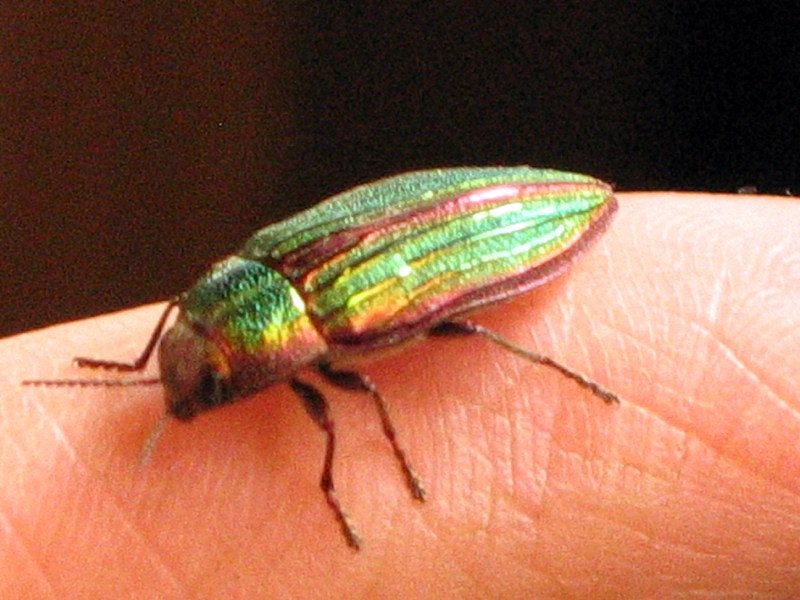He falls asleep in the woods one day.
Spent twenty years of his life that way,
Rip Van Winkle, Rip Van Winkle, Sleep, Sleep, Sleep.
And so go the words of an old and wacky song. Yet sleeping for twenty years is de rigeur for certain insects. In scientific terms this is called extended diapause. Every once in a while, I find one of these surrealistically beautiful, golden buprestid beetles crawling out of the floorboards of my house. They belong to the jewel beetle family and start out their lives as eggs laid in freshly fallen Douglas-fir logs. Now our house is mostly made of Douglas-fir, but it was built in 1979, so the wood isn’t exactly ‘freshly fallen.’ A little research turned up the fact that buprestids can diapause for up to 51 years, making them the Rip Van Winkles of the bug world. The larvae just keep sleep, sleep, sleeping, even while the log they’ve been living inside gets milled into lumber and incorporated into a building. Eventually, something (and it’s hard to say exactly what) tells them it’s time to wake up. I’ve noticed that firing up the wood stove, after the house has been cold for a while, can serve as a trigger for their emergence. The buprestids are sluggish when they first come out; a little dazed perhaps by the burden of their new responsibilities or the first rays of light they have ever seen, reflecting off their iridescent exoskeletons. Now that they are adults, time has lost its viscosity and they are launched into a frenetic trajectory of mating, laying eggs and dying, soon after. Their long, quiet decades of dreaming behind them, the buprestids crawl stalwartly toward their fate.




